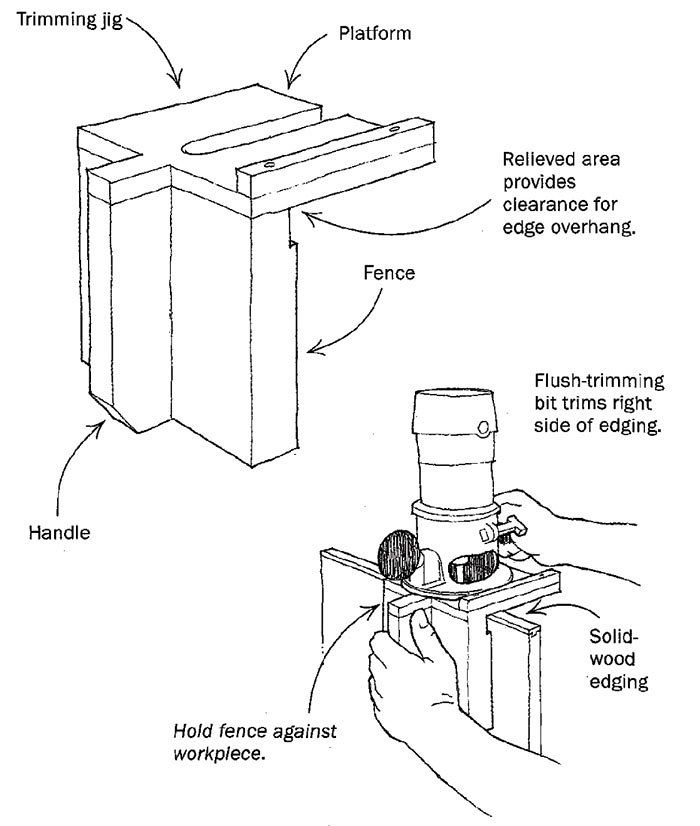Trimming Solid-Wood Edging on Plywood

I prefer to cover the raw edges of plywood cabinets with hardwood strips that I join to the cabinet pieces with tongues and grooves. I cut the strips a little wider than the thickness of the plywood to ensure complete coverage. This, of course, requires that the overhang be removed after gluing. I first tried a belt sander to trim the excess, but the sander was always just one little slip away from sanding right through the veneer.
After such a slip, I decided that a trim router with a flush-trimming bit would do a better job. But the narrow edge of the plywood did not provide an adequate support base for the router. So I built the trimming jig shown above, which consists of a handle, a platform and a fence that rides against the plywood. Cut a slot in the top of the platform for the router bit, and attach a stop to the back of the platform to keep the bit centered in the slot. Relieve the fence at the top of the inside surface so that it will clear the overhanging edge and any squeezed-out glue.
To use the trimming jig, clamp the plywood in a vertical position and, with your left hand, bring up the jig’s fence to the left side of the plywood. Insert the router so that the flush-trimming bit is riding along the right side of the plywood. Push the jig away from you while exerting a little pressure on the router to keep the bit bearing against the plywood. This will trim the edging neatly without marring either the plywood or the hardwood edge.
Paul Heiser, Reno, Nev.
Fine Woodworking Magazine, August 2001 No. 150

Fine Woodworking Recommended Products

Jorgensen 6 inch Bar Clamp Set, 4 Pack

Estwing Dead-Blow Mallet

Ridgid R4331 Planer




















Log in or create an account to post a comment.
Sign up Log in